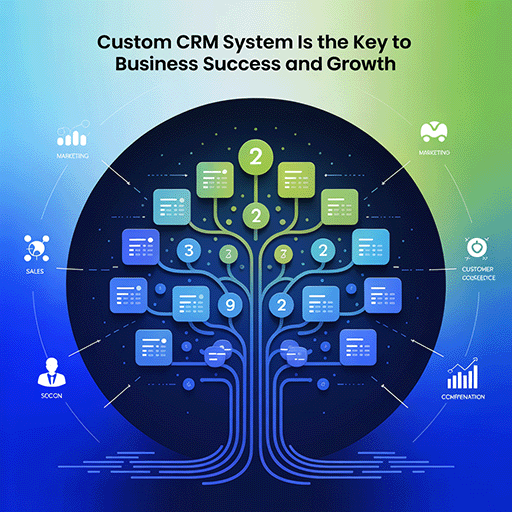In 2023, international outsourcing investments reached $731 billion. This is undeniable proof that modern businesses are switching to a large pool of outsourcing models while trying to build a team of strong professionals to work on their projects. Yet, creating a development team from the ground up is sometimes impossible or unfeasible, and this is when team extension steps in.
This blog article is dedicated to this service, which has already benefited many businesses. If your company is hesitating, you will find valuable insights here.
Extended Team Model Explained
Under the extended team model, the company’s in-house development teams and remote specialists provided by an outsourcing agency work together. In this case, a CTO, a Project Manager, or a client manages an extended part of the team. The role of an extended team here is to complement the core in-house team, meaning that the client pays for skills and talents rather than for A to Z development. 
So, when does this model work best? Imagine that your in-house team is now working on a complex e-commerce or fintech platform, expected to manage large sets of personal and financial data. It also integrates with numerous external tools and third-party instruments. And providing the safety and security of such sets is a true challenge. With time, your team will require specific skills and expertise they don’t have: Machine Learning, Artificial Intelligence, smart contract development, payment gateway integrations, etc. An extended development team allows such companies to assign such tasks to the required specialists quickly.
In contrast to other outsourcing models, the extended team suggests that project management processes take part on the client’s side. At the same time, remote experts handle assigned tasks and report to the in-house team members about the work completed.
Extended Teams vs Dedicated Teams
Team extension and dedicated team collaboration models are often confused in software development. Businesses need to understand the difference between these two. So, for you to easily differentiate between the two outsourcing models, we have set up a detailed table.
| Extended Team | Dedicated Team | |
| Popularity | It is mainly preferred by businesses looking to add extra skills and expertise to their existing in-house crews. | It is mainly preferred by companies looking for high control over business processes and tech & human resources. |
| Areas of use | It works for both long-term and short-term projects if an in-house team lacks specialized skills. | It works for long-term development projects, with one team allocated to work on A to Z development. |
| Cost-efficiency | It’s always cost-efficient, but especially in the case of short-term projects when exceptional expertise and skills are required for a short time. | It can be cost-efficient for long-term projects because of the team’s dedicated nature. |
| Infrastructure | The infrastructure is shared between the in-house team and the extended team. | The infrastructure is provided by the outsourcing or hiring company. |
| Training | A special onboarding period is required to understand the in-house team’s tools and the scope of work. | It requires training and orientation in particular tools and processes of the company. |
| Communication | It is more complex because of the need to integrate into the existing team. | Direct and regular communication with the team is expected. |
| Flexibility | It is very flexible because provided resources can be scaled down or up, depending on the project requirements. | It has lower flexibility because the team is fully dedicated to the project. |
| Security | The client and vendor share control over security. | It has a high security level due to strict standards and protocols. A client directly controls all security practices followed by a dedicated team. |
| Processes | Extra team members share all the processes and tools of the existing in-house team. | The client has complete control over the processes and instruments the dedicated team uses. |
| Agreements | Depending on the needs, this can be either a long-term or a short-term agreement. | This is a long-term commitment agreement. |
Benefits of an Extended Software Development Team
From the table above, you have probably noticed that cost-efficiency is a true benefit of this software development team structure, but this isn’t the limit. In addition to being cost-effective, the model offers numerous other advantages:
- Access to a pool of talents
- Scalability
- Shared responsibility
- Defined priorities and commitment
- Transparency
- Met deadlines
- Project management control
- Flexibility
Access to a pool of talents
You get more when choosing an extended team, meaning that you access thousands of international talents at fair costs when choosing an offshore development center. This is because your business is not limited to local engineers but has access to the skills and expertise of programmers from different backgrounds. Read more about outsourcing nearshore vs. offshore to make your choice.
Scalability
Due to fast recruitment ensured by a provider of an extended team, a hiring company can quickly scale its operations and processes through the sound use of provided resources. This not only helps to complete the work faster but also ensures its high quality. Businesses need to pay only for engineers who deliver rather than paying employees regardless of their performance (like in the case of in-house teams).
Shared Responsibility
In-house developers and engineers working remotely share the goal of completing the same project and share responsibility. This facilitates strong working connections and collaboration based on the general direction of two teams toward one common goal.
Defined Priorities and Commitment
When you hire engineers for your extended team model, you get access to the workforce on a full-time basis. Extended teams are part of in-house crews, focusing exclusively on the company’s project. This allows the business to preserve high standards and ensure development results in high-quality software.
Transparency
Remote work of an extended team always comes with transparency. Such teams communicate without barriers or limitations. They do not need any middlemen to promote trust and ongoing communication. Everything, from pricing to delivery, is transparent, allowing the business to predict its further budget and the engagement of an extended team for months to come.
Met Deadlines
As a rule, extended teams are hired for a specific scope of work when the in-house team lacks the workforce or expertise to develop a project on time. Because they are hired to complete specific functionalities, extended teams help companies meet deadlines and avoid financial losses.
Project management control
In most outsourcing models, businesses have to additionally hire a project manager to handle their team’s activities. Yet, with the software engineering team extension, your in-house team managers can communicate with the hired programmers, assign tasks, and manage them as they manage in-house developers.
Flexibility
Pre-flexibility is typical for most outsourced teams. In the extended team model, you can choose the number of engineers you need to complete your project. This model allows companies to deploy the requested number of IT experts to meet budget numbers and deadlines.
Moreover, your in-house managers are always involved in the hiring process and can vet the team based on the business’s interests and goals. With an extended team model, closing the gaps is straightforward, whether it’s the development of software testing, server-side work, or cloud computing.

Hiring a Partner for Software Development Team Extension
There are many great tips for choosing an outsourcing partner, but things get a bit different when picking a partner for team extension. What we suggest is the following five core steps:
- Identifying business and project needs
- Searching for the right agency
- Deciding on the conditions for collaboration
- Having a session of calls
- Assigning test tasks
Identifying business and project needs
What is your product? What is your aim? What tech stack or expertise do you require? Answering these three questions will allow you to understand 1) who you need to add to your in-house team and 2) how quickly you need them. If it’s a seasoned developer, finding and hiring a relevant candidate from a professional IT agency won’t take much time.
Searching for the right agency
In this case, it’s better not to rely on word of mouth. We suggest visiting professional forums, websites, and platforms like Clutch to read about different agencies and companies with relevant staff augmentation experience. There, you’ll find customer feedback that will allow you to make the appropriate choice.
Deciding on the conditions for collaboration
Agree on the communication mode, hourly rates, and candidate skills and qualifications. Ensure that the agency’s candidates will adhere to your business’s non-disclosure and privacy agreements. After negotiating these with the IT agency, make a checklist and cross out all the points.
Having a session of calls
Choose among several candidates. Set up video calls with IT specialists to talk through the details and get to know each other better. Remember that this is a two-way road, meaning that not only do you choose a candidate, but a candidate is free to decide if they’re interested in working with your team. Don’t forget to evaluate their soft skills.
Assigning test tasks
Assign candidates trial tasks to make sure that their hard skills match their CVs and your expectations. Test task evaluation allows businesses to avoid hiring IT specialists who don’t have the skills and expertise they claim.
Conclusion
Hiring an extended team to complement in-house development power benefits businesses searching for top talents and the best results. However, the most complicated step is choosing an agency you can trust and agree to a long-term collaboration with. At LITSLINK, we help businesses across all domains to enforce their in-house teams with external experts per request. You are welcome to get in touch with us, and together, we’ll extend your team to the needed size.




